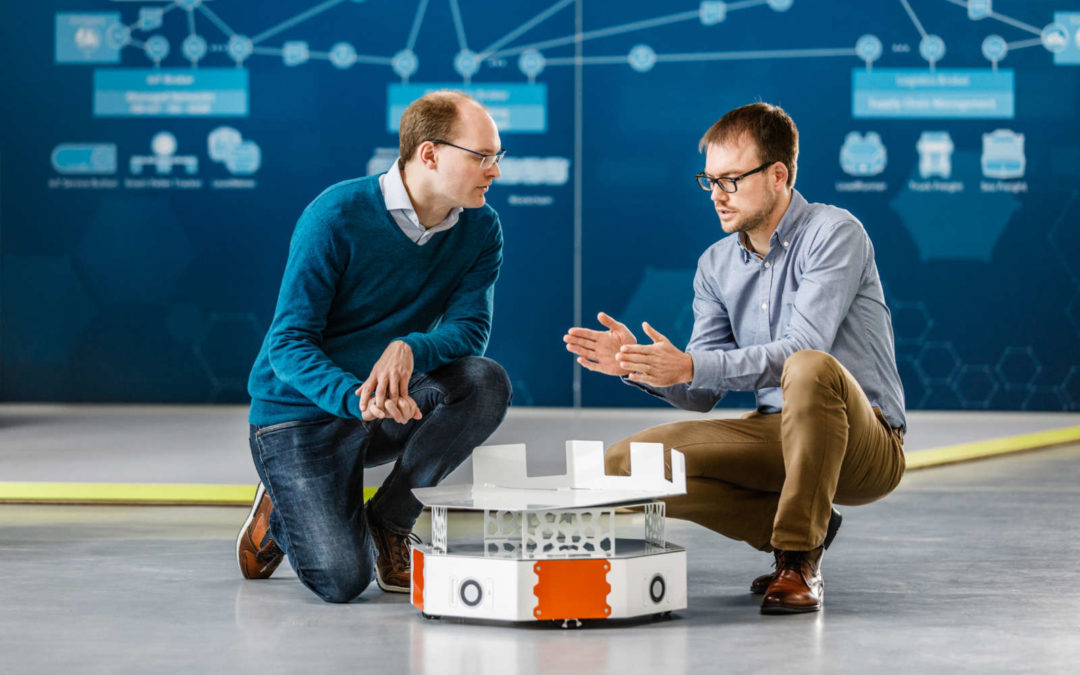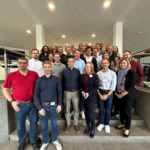For the second funding phase, the Center of Excellence had called on researchers at the science location Dortmund to apply for admission to the research clans with creative and future-oriented projects – with great success.
The research clans are a successful model of the Center of Excellence. What exactly distinguishes these interdisciplinary research groups?
Christoph Pott:The research clans serve to promote interdisciplinary and cross-partner research and development work in the field of logistics and information logistics at the science location Dortmund. Each clan pursues a main topic and illuminates it in various projects from different professional directions. This structure has proven its worth in the first funding phase of the Center of Excellence from 2016 to 2019.
Christoph Besenfelder:We have thus succeeded in developing a research and innovation community that appreciates the value of cross-institutional cooperation at the science location Dortmund and the uncomplicated access to experimental halls, test and experimental fields of all facilities.
Michael Schmidt:The structure of the research clans particularly distinguishes our Center of Excellence. It is precisely the interdisciplinary composition of the research groups that has enabled us to further develop and deepen many novel research approaches in recent years.
For the continuation of the clans in the second funding phase, the Center of Excellence had launched a call for applications. What has this approach achieved?
Christoph Pott: In fact, by mid-2019 we had already called on all researchers at the site to submit concrete projects and project ideas for the future work of the Center of Excellence. The response was enormous. This showed us how great the potential is in logistics research and that the players at the science location Dortmund are burning for their exciting topics. The high level of participation is also an expression of how networked and interlinked the various institutions and players at the site already are thanks to the Center of Excellence. A basic requirement was the joint application of at least two partners of the Center of Excellence.
How were the new projects selected for the research clans?
Christoph Besenfelder:We selected the projects on the one hand because they build on the successful work of the research clans, but also on the basis of our research map – one of the central overarching projects of the Center of Excellence. The research map links trend topics and application areas of logistics at the location with each other, so that research priorities and potentials could be read off at a glance for the first time. With the new projects, we can now fill in the blank spots on the research map and of course continue to update the map with the results from these projects. For the second funding phase, which at one year is considerably shorter than the first, we have put together a total of eight clans.
Transfer plays a major role in the second funding phase. How do the new research clans implement this?
Michael Schmidt:The research clans are of course an essential instrument for realizing the transfer idea and bringing research into application or into the economy. Against this background, the research teams were already called upon to submit concrete proposals for transfer design when they submitted their topic and project ideas. We are confident that we will be able to present numerous innovative formats here in the second funding phase. Last, but not least, a direct transfer of knowledge from the scientific field of competence to application will take place via the researchers who are active in both the research clans and the pilot projects.
Christoph Pott, Christoph Besenfelder and Michael Schmidt are members of the management team of the Center of Excellence Logistics and IT and were responsible for the application process for admission to the research clans.
Photo: Michael Neuhaus/IML







